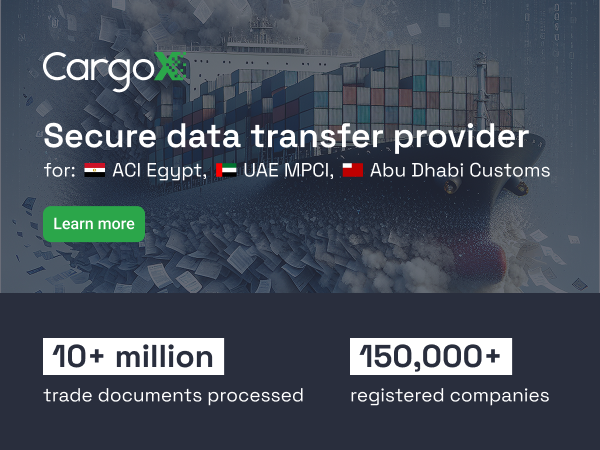Harnessing technology: insights from a new WCO survey
29 October 2024
By the WCO SecretariatThe WCO conducted a survey between April and June 2024 to identify technology adoption trends among Customs administrations, gauge the extent to which innovation is implemented, and ultimately identify gaps and needs in terms of assistance and guidance.
It is not the first time that the WCO has consulted Members on the use of technologies. In 2021, it conducted a first survey and presented its results in a paper entitled The role of advanced technologies in cross-border trade: A customs perspective, co-developed with the World Trade Organization (WTO). Building on the survey, as well as information shared at WCO technology-focused events and various working body meetings, in 2022 the WCO and the WTO published the WCO/WTO Study Report on Disruptive Technologies to raise greater awareness of these latest technologies and their potential, by demystifying each of them individually.
The second survey was led by the WCO team in charge of the Smart Customs Project which is funded by China Customs. The Project seeks to delve deeper into the practical application and adoption of disruptive and sustaining technologies by Customs[1], as well as into the innovative application of traditional technologies.
Findings
The Smart Customs Project Survey garnered substantial participation, with 116 Customs administrations sending their responses, representing 62% of the WCO Membership. The findings have been categorized under six main topics and are presented below.
IT strategy and maturity
A notable finding from the survey is the widespread existence of IT strategies among respondents, indicating a foundational commitment to integrating technology into Customs operations.
When reporting on maturity levels, administrations were requested to choose between five options:
- initial (there is an awareness of the importance of innovation but no structured innovation capability);
- experimental (ad-hoc projects operate with little coordination);
- operational (teams are established, policy is formalized and a roadmap is in place for deploying disruptive technologies);
- advanced (a clear data architecture and IT governance are in place, multiple solutions are deployed, a collaborative environment and strategic partnerships are established);
- transformational (technologies are fully integrated into business processes, there is a strong internal capability to manage, maintain and develop tools, a culture of innovation exists).
The survey revealed that 30% of the respondents situated themselves at the operational level, 27% at the advanced level, 23% at the experimental level, 13% at the initial level and 7% at the transformational level.
Adoption status of different technologies
Big data and data analytics solutions are the most common technologies being fully deployed by respondents. They are followed by cloud computing, biometrics, artificial intelligence (AI)/machine learning (ML), drones, robots, blockchain, Internet of Things, geospatial mapping and virtual, augmented and mixed reality.
Expected impact versus difficulty of adoption
Respondents were asked to rate the expected impact of various technologies versus their difficulty of adoption. AI/ML and big data/data analytics were reported as having the highest expected impact and relatively moderate difficulty scores. Blockchain and cloud computing were reported as having a higher level of difficulty of adoption, while still having a substantial expected impact.
Adoption of technology to improve Customs performance
Respondents were also asked to list the areas where technology adoption is contributing or expected to contribute to advancing Customs performance.
The top five areas were:
- smoother movement of goods
- quality of services
- use of technical targeting and detection
- combating of illicit trade in excisable products
- paperless trade
Capacity building needs
Respondents reported the need to develop their capacity in many areas, including:
- implementing, maintaining and optimizing new technology solutions effectively;
- understanding and mitigating threats and vulnerabilities associated with new technologies to protect data and systems from cyberattacks;
- creating and enforcing policies and frameworks to govern technology use;
- aligning technology adoption with organizational goals and managing the transition process to ensure stakeholder engagement and support;
- designing and managing databases to optimize data storage, retrieval and management for new technology solutions;
- establishing procedures and policies to systematically and transparently manage decision-making on technology adoption, performance monitoring and compliance;
- planning, executing and overseeing technology projects to ensure timely, within-scope and budget-compliant completion;
- understanding and addressing the moral implications and societal impacts of adopting new technologies.
Selection of the technologies to focus on
Respondents were asked to identify the top three technologies that might be adopted by their Administration in the near future, and which ones they would like the Smart Customs Project to focus on. As to be expected given the results of the survey, artificial intelligence/machine learning, blockchain and cloud computing[2] were chosen as the technologies to focus on.
Detailed reports on the technologies identified are to be developed, collecting use cases and addressing issues such as minimum technical specifications for implementation/integration, costs and trends, business processes, policy arrangements and legal requirements.
The use of other technologies will still be examined as part of the Project, including via the Smart Customs Community Portal, which is expected to be launched in December and will enable the exchange of best practices and experiences between Customs administration experts on technology adoption and implementation.
More information
Smart Customs Project Survey
Smart Customs Project web page
smartcustoms@wcoomd.org
[1] A sustaining technology improves existing product performance and maintains utility of an already established technology. A disruptive technology is defined as a technology which displaces an established technology and shakes up the industry, or a ground-breaking product that creates a completely new industry.
[2] Cloud computing “is not a disruptive technology in and of itself, but a disruptive IT delivery model which leverages key technology ideas (like grid computing, utility computing and Software as a Service) to deliver IT in a much more efficient model”. See https://www.zdnet.com/article/the-disruptive-nature-of-cloud-computing/, consulted on 2 September 2024.

